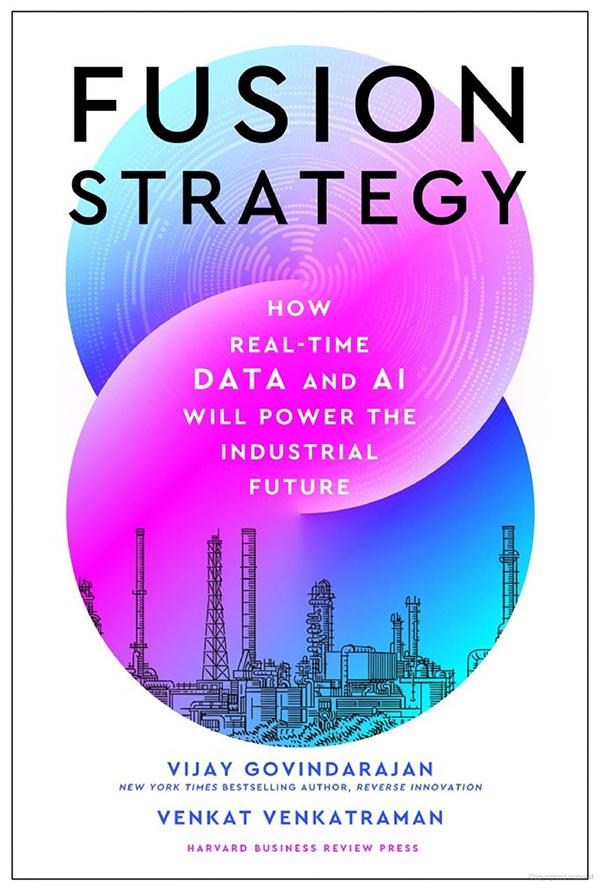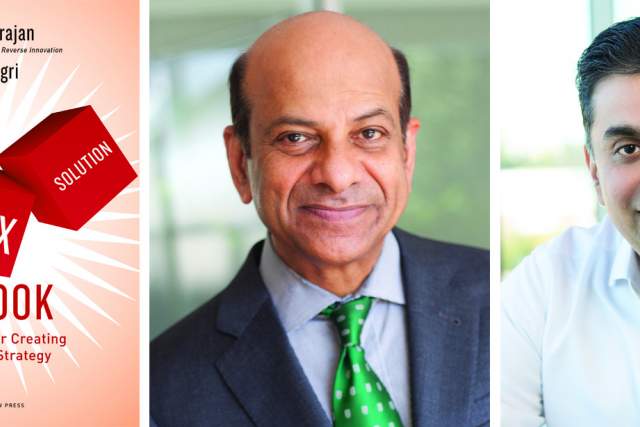A windowpane is just a piece of glass. But embed it with sensors and Internet-of-Things (IoT) technology, and it can automatically get darker to block the sun, and display images as if it were a computer screen. A tractor is just a machine of brute force. But endow it with cameras, GPS computing, and machine learning, and it can self-navigate a 2,000-acre farm while differentiating a weed from a crop to selectively apply herbicide where it’s needed.

These examples illustrate the value in analog products that can be unlocked with data and super-computing. And they are the premise of Fusion Strategy: How Real-Time Data and AI Will Power the Industrial Future (Harvard Business Review Press, 2024), a new book by Vijay Govindarajan, the Coxe Distinguished Professor at Tuck and Dartmouth.
As Govindarajan and his coauthor, Venkat Venkatraman of the Questrom School of Business, make clear, the opportunities for digitizing the industrial economy are enormous. The world’s GDP is roughly $100 trillion, and one-quarter of that is composed of soft-asset companies such as Apple, Microsoft, Alphabet, Netflix and Amazon, which have already been transformed by digital technology. The remaining three-quarters—$75 trillion—is made up of industrial firms that will either survive by harnessing the power of AI and real-time data or be eclipsed by those who do so.
Govindarajan is also teaching a new executive sprint course on the topic, Power the Future: AI and Data for Strategic Advantage, which is hosted by Tuck Executive Education. We sat down with him to learn more about key concepts in his new book as well as his insights on the transformative power of generative AI.
How did you and Venkat, two business school professors, approach the writing of a book that fuses industrial realities and digital technology?
We studied how the digital giants destroyed consumer industries in the last 17 years, and we developed strategy principles that are actually actionable. For example, Spotify changed the strategy in the music business by being able to observe in real time what music their users were listening to. We call this personalized information a “datagraph,” and it’s one of the keys to unlocking value for industrial firms: data about a product, as it is consumed.
Why is a datagraph at the heart of how industrial firms should do business?
Take Tesla as an example. They know how Tesla drivers are using their cars, and the cars are connected to the Internet, so they can upload software updates and repairs without owners having to go to a garage. And they’re getting into the insurance business, offering personalized rates that correspond to each owner’s individual risk profile, and competing with incumbents like Travelers and State Farm. This is a totally new strategy, fueled by data and AI.
How does AI fit into the fusion strategy?
AI is crucial because it analyzes the data from the datagraph. We’re talking trillions and trillions of datapoints, so supercomputers are necessary. Fusion AI has four types of data analysis: descriptive (what happened), diagnostic (why did it happen), predictive (what will happen), and prescriptive (what should happen). A product that contains this analytical ability can prescribe exactly what the customer needs and solve the customer problem in real time.
Your book is not just a book; it also comes with access to an AI coach, right?
When writing the book, we wanted to be able to deliver knowledge to readers in real time. So we came up with the AI Coach. It updates all the cases that we have in the book, and it has collected data on 50 other companies that aren’t mentioned in the book. To use it, you log in to the website and ask questions. For example, if someone asks, “I’m in the quick service restaurant business, how do I construct a datagraph?”, we have trained the Coach to answer that. The Coach is a way to go into more depth on the concepts, but more importantly show its application across industries much more than we were able to do in the book.
You make the case in the book for a new strategy for industrial firms to take advantage of data and AI. How urgent is it for these companies to evolve in this direction?
I think they should bring a tremendous sense of urgency. The consumer incumbents ignored the digital threats, thinking they would only alter the process, not the products. But they were wrong. The same fate could happen in the industrial sector. There is a difference, however. Tractors and aircraft engines aren’t going to go away like CDs did. I visualize a world where there will be an ecosystem of industrial and digital companies partnering. The only question is who will orchestrate it and take the leadership role.

